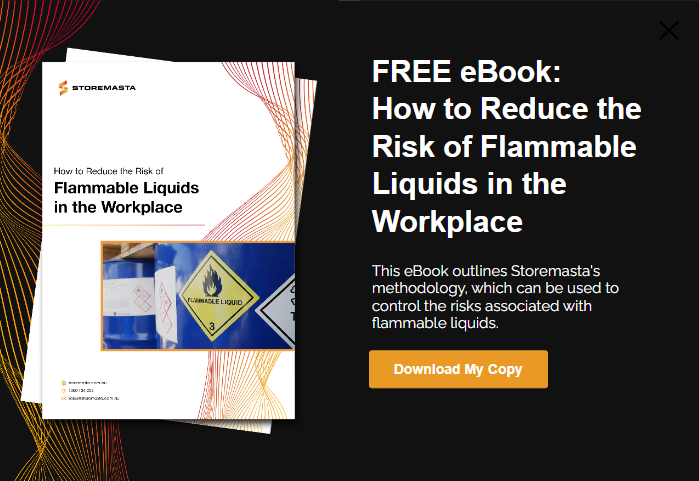Petrol powers businesses across Australia and the globe, with an estimated 88.5 million barrels used worldwide each day. Petrol (also known as gasoline in the United States) is a fuel that’s obtained from the fractional distillation of crude oil. With so many businesses relying on this type of fuel, it’s important to understand the risks associated with its handling and storage — and how you can address these dangers. This blog answers the question, ‘Is petrol flammable’ and explains what you need to do to store petrol safely in your own workplace.
What Makes Petrol So Flammable?
The Australian Dangerous Goods (ADG) Code classifies all substances with a flash point below 60 °C as Class 3 Flammable Liquids. A flash point is the lowest temperature that will cause a chemical to emit enough flammable vapours to ignite in the presence of an ignition source.
You can find out the chemical and physical properties (including the flash point) of your Dangerous Goods by referring to the Safety Data Sheets (SDS) for each product. An example of a SDS for Caltex Unleaded Petrol is displayed below.
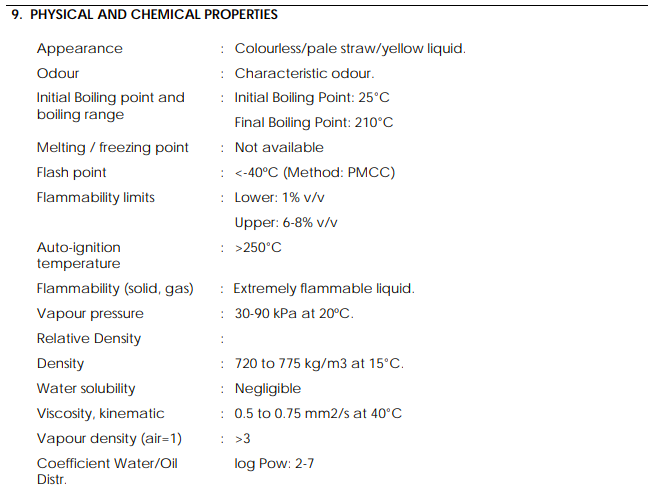
Refer to the SDS of your petrol to determine its flash point and requirements for handling and storage.
You’ll see the flash point for this particular type of petrol is listed in the SDS as <-40ºC.
Generally, petrol fuel has a flash point of -43 °C. Therefore, the ADG Code classifies petrol as a Class 3 Flammable Liquid.
However, it’s important to note that due to this low flash point, petrol is regarded as a highly flammable substance. With a flash point of just -43 °C, your petrol stores have the potential to ignite and readily burn at room temperature. This means that diligent care must be taken whenever petrol is being handled, decanted, dispensed, transferred or stored in your organisation.
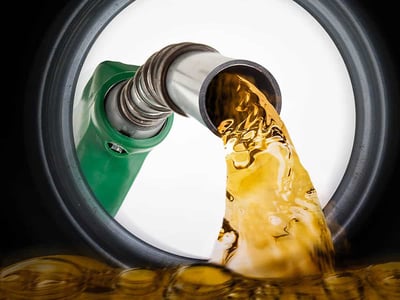
Petrol has a low flash point which means it can ignite and burn at room temperature if the substance meets an ignition source.
How Does Petrol Burn?
When petrol burns, it isn’t the liquid that burns, but the flammable vapours that are dispersed from the flammable liquid. Therefore, the more easily an organic compound vaporises, the more volatile or flammable it will be.
The organic molecules within petrol are relatively small — with around 4-12 carbon atoms per molecule. What this means is that the smaller the mass of the molecules, the weaker the intermolecular forces of attraction are between the molecules. The intermolecular forces of attraction are the forces that keep the molecules together as a liquid and keep them from dispersing as a gas. As the intermolecular forces between petrol molecules are relatively weak, it means that very little heat energy is required to break these bonds and cause the petrol molecules to disperse as gases.
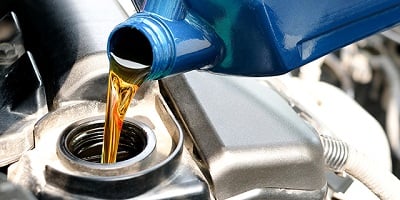 Due to the intermolecular forces between petrol molecules being weak, the substance can quickly ignite if there is an ignition source nearby.
Due to the intermolecular forces between petrol molecules being weak, the substance can quickly ignite if there is an ignition source nearby.
In fact, the intermolecular forces between the molecules in petrol are so weak that the molecules will gain enough heat energy to escape as a gas to form a flammable mixture with air at temperatures as low as -43 °C. This flammable mixture will ignite in the presence of an ignition source.
Are Diesel Fuels Flammable?
The molecules that make up diesel fuels are much larger than those that make up petrol fuels. Diesel fuels have around 12-20 carbon atoms per molecule. As their molecules are larger than petrol molecules, the diesel has stronger intermolecular forces between molecules — which requires more heat energy to break.
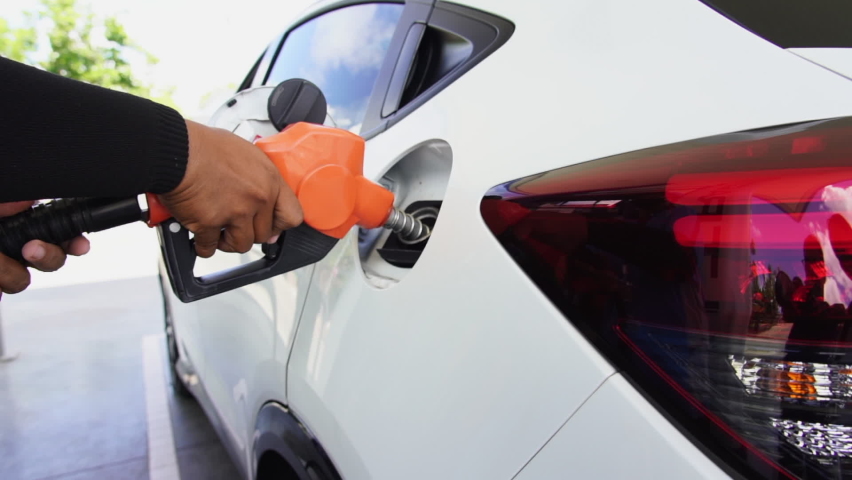
Check the Safety Data Sheet of your diesel fuel to determine the flash point of the substance.
Some diesel fuels will not release enough flammable vapours to ignite in the presence of an ignition source at temperatures below 60 °C. Therefore, it really depends on the individual flash point of the diesel fuel that you’re using. Diesel fuels may have a flash point anywhere between 52 °C and 93 °C. Some diesel fuels (with flash points below 60 °C) are classed as flammable liquids, but those with a higher flash point are classed as combustible liquids.
To put it simply, you must refer to the SDS of your diesel product to determine if your diesel fuel is flammable or combustible.
How To Safely Store Petrol
As petrol fuels are very flammable, their presence may pose many risks to your organisation and the environment. To ensure that your business is adequately protected, petrol fuels must be stored in a safe and compliant manner.
All storage facilities used to store petrol — or any chemical that’s a Class 3 Flammable Liquid — must comply with the Australian Standard AS 1940:2017 - The storage and handling of flammable and combustible liquids.
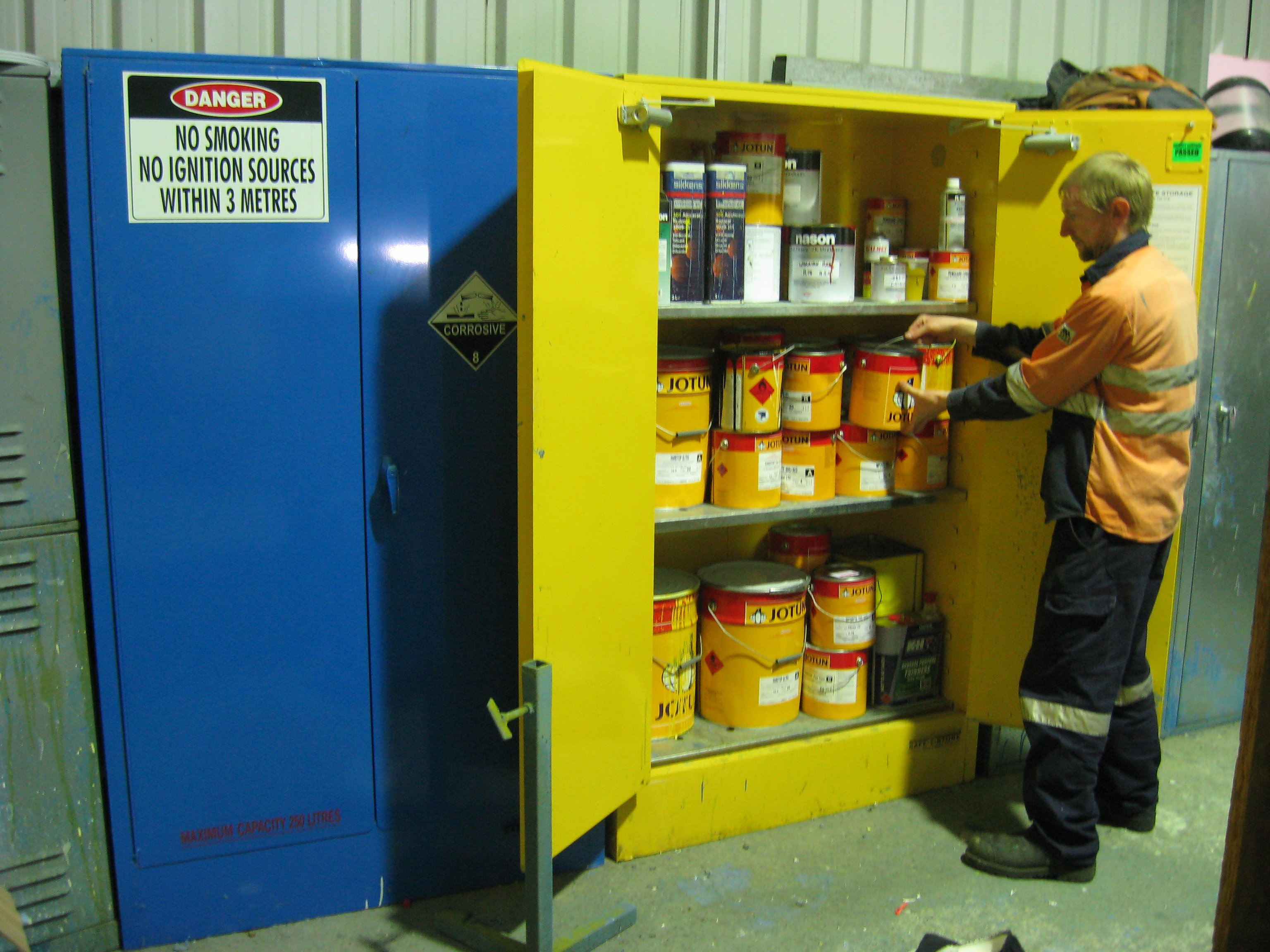
Flammable liquids stores must comply with the requirements of the Australian Standard AS 1940:2017.
This Standard outlines the requirements for the design, construction and operation of stores used for the storage of flammable liquids.
The Australian Standard AS 1940:2017 details a range of requirements for flammable liquids stores including specifications for:
- Ventilation
- Spill containment
- Segregation from incompatible chemicals
- Separation from protected places and ignition sources
- Dangerous Goods signage
- Operational requirements
All these features ensure that the petrol fuels pose the least amount of risk to an organisation that’s storing this class of Dangerous Goods. We’ll explain how each of these requirements for flammable liquids storage can help keep your petrol stores safe and compliant.
Ventilation
The ventilation ensures that the flammable vapours coming from the flammable liquids are kept at a safe concentration. A low concentration of flammable vapours reduces the risk of the vapours igniting in the presence of an ignition source.
Spill Containment
The spill containment provisions ensure that any petrol spills that may occur inside the flammable liquids store are contained. Containing petrol spills allows you to reuse the fuel and protects the environment from becoming polluted.
Segregation From Incompatible Substances
Petrol and other flammable liquids are incompatible with a number of other dangerous substances. To avoid chemical reactions that can result in immense damage and destruction, flammable liquids must be segregated from incompatible substances.
These specific distances are determined by the dangerous goods segregation chart. By following the segregation chart, you’ll be reducing the risk of incompatible Dangerous Goods coming into contact with one another and causing a violent chemical reaction.
Separation From Protected Places and Ignition Sources
As large quantities of flammable liquids have the potential to cause severe fires, they must be separated from public and protected places by certain distances set out in AS 1940 to avoid harm to people in the event of a fire.
As a petrol fire will be triggered by an ignition source, it’s vital that all petrol storage facilities are completely isolated from ignition sources.
Petrol stores must also be separated from protected places, and in some cases, they may also have to be separated from public places.
The definition of public and protected places is given below:
A public place is any place other than private property, open to the public, which the public has a right to use and which includes a public road. Parking areas for commercial buildings are not considered to be public places.
A protected place is a factory, workshop, office, store, warehouse, shop, or building where persons are employed, that is outside the property boundary of the installation.
The Standard explains that separation distances are determined by the quantity and volatility of the flammable liquid. Therefore, you must consult AS 1940:2017 to determine the exact separation distance that you’ll need to apply to your petrol stores.
Dangerous Goods Signage
To warn workers and visitors of the potential risks associated with the flammable liquids that are stored on a premises, clear dangerous goods signage must be displayed on all flammable liquids storage facilities.
This signage includes the Class 3 Flammable Liquids diamond as well as the No Smoking, No Ignition Sources Within 3 Metres signage (that must be at least 50 mm high). If you’re storing your petrol in a flammable cabinet, the cabinet must be marked with the maximum storage capacity as well as the name and address of the manufacturer or, for cabinets that are imported, the distributor within Australia.
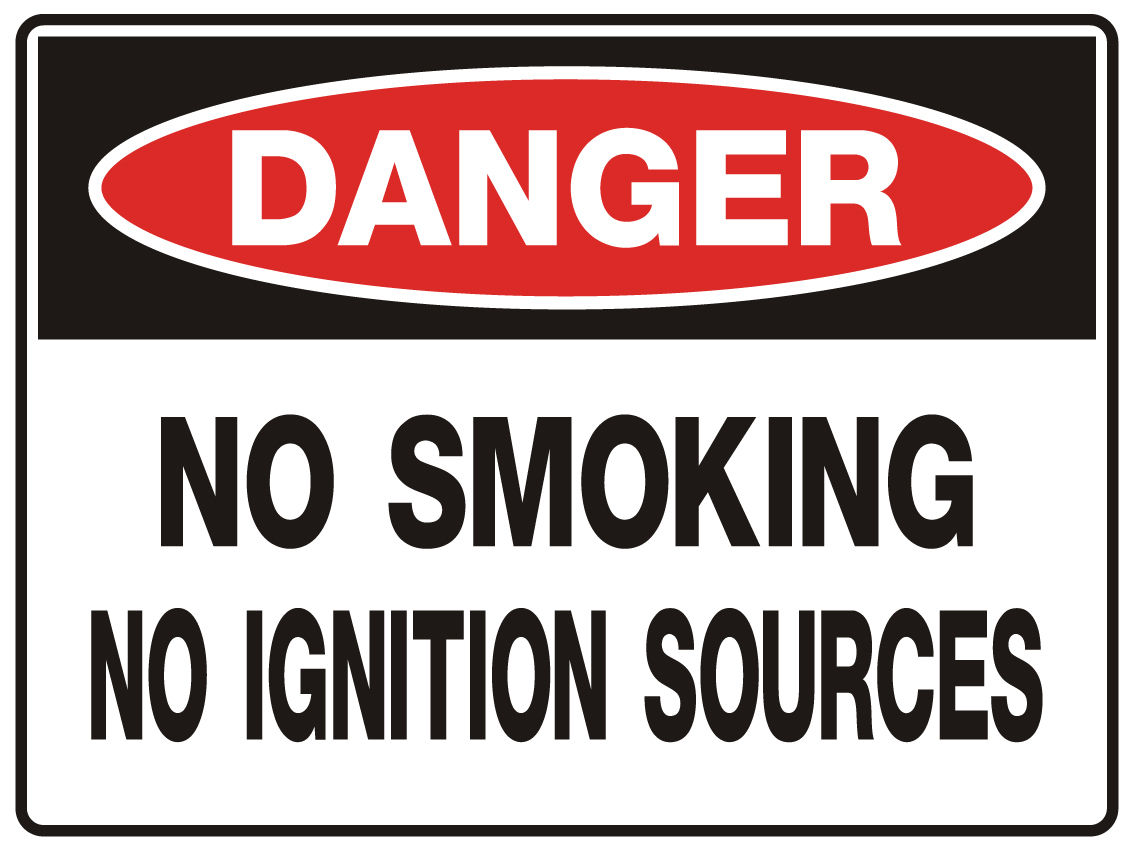
You are required to display and maintain dangerous goods signage including the Flammable Liquids 3 and No Smoking, No Ignition Sources signs on petrol stores.
Operational Requirements
To ensure the least amount of risk to those using flammable liquids, AS 1940:2017 also outlines certain operational requirements for those storing flammable liquids in dangerous goods storage cabinets.
Section 4.9.8 Storage in storage cabinets explains the operational requirements and recommendations:
(a) Persons shall be prevented from entering the cabinet.
(b) Drums shall not be stacked more than two high if they are greater than 60 L capacity.
(c) Only one drum of more than 60 L capacity should be kept in a horizontal (decanting) position at any time.
(d) Only closed packages, or those fitted with a tap, should be stored in the cabinet.
What Are The Different Types Of Petrol Storage Facilities?
To enhance the safety of those who must handle and store flammable liquids, AS 1940:2017 outlines different requirements for indoor storage and outdoor storage.
Flammable liquids should be stored within a compliant flammable liquids storage cabinet if they are to be stored indoors. For outdoor storage, flammable liquids can be stored safely using a chemical storage container that has been manufactured in full conformance to AS 1940:2017.
You can also utilise more advanced methods to store, handle and dispense flammable liquids. For example, outdoor dispensing stations provide an efficient storage and dispensing solution for petrol and provide the necessary risk control measures to reduce the risk of fire, explosion and human harm. Outdoor petrol dispensing stations can be manufactured to meet specific storage and dispensing requirements of those that use flammable liquids on a regular basis.
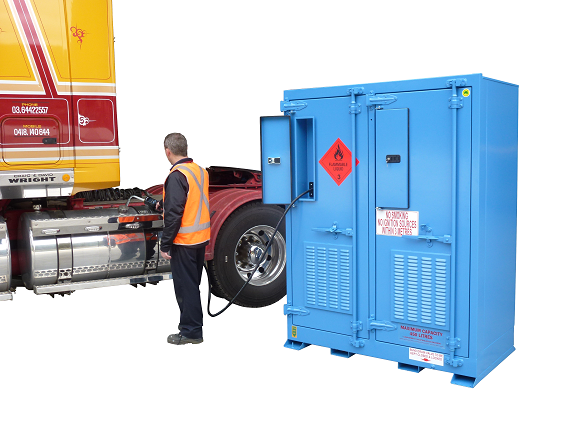
Outdoor petrol dispensing stations are an effective risk control measure for workplaces and remote sites.
Is Your Petrol Stored Safely?
As we’ve discussed in this blog, petrol is classified as a Class 3 Flammable Liquid. Not only is it a flammable substance, it’s also highly volatile due to its low flash point. Therefore, if your organisation is handling and storing petrol, it’s vital that you have measures in place to reduce the risk petrol poses to your staff, property, community and environment. To achieve a safe and compliant workplace, you should follow the detailed requirements of the Australian Standard AS 1940:2017. You can also learn more about the safe storage of petrol by accessing our helpful guide, How To Reduce The Risks Of Flammable Liquids. Get your copy for free today and learn more about chemical compliance in the workplace.
Joining the team as a Dangerous Goods Storage Consultant, Melissa Hampton became Storemasta's Marketing Manager in late 2021. With extensive knowledge and experience in chemical compliance, Melissa is responsible for leading the Marketing team and helping shape their marketing strategy. In her spare time, you can find Melissa hiking, swimming and enjoying the great outdoors in beautiful north-west Tasmania.

